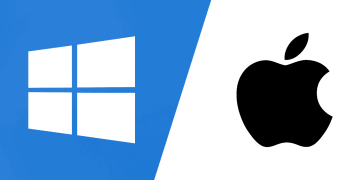Introduction
In the fast-paced and ever-evolving technology landscape, consumers are faced with a vast array of choices when selecting technology products and software. From smartphones and laptops to cloud storage services and fitness trackers, every product promises to be the best for specific needs. However, making a decision in this sea of options can be overwhelming.
This article discusses how consumers can leverage in-depth analysis—through data-driven insights, reviews, comparisons, and market trends—to make smarter purchasing decisions. By engaging in detailed research, consumers are empowered to find the most suitable products and software to fit their needs and budgets.
1. The Importance of In-Depth Analysis in Consumer Decision-Making
1.1 The Information Overload Dilemma
- With the advent of online shopping, the volume of available information is staggering. Consumers are exposed to an overwhelming number of products and advertisements.
- This section explains how information overload complicates decision-making and why in-depth analysis is essential for making informed choices.
1.2 Leveraging Data for Smarter Decisions
- Emphasize how data-driven decision-making can help cut through the clutter and focus on the most relevant product features that matter most to the consumer.
- Discuss how consumers can use technical specifications, reviews, and user feedback to inform their choices.
2. Key Tools and Resources for In-Depth Product and Software Analysis
2.1 Understanding Product Specifications
- Discuss the importance of technical specifications (processor speeds, RAM, battery life, etc.) when assessing tech products.
- Examples of how understanding these specs leads to better alignment with personal needs (e.g., laptops for gaming versus professional work).
2.2 Expert Reviews and User Feedback
- Differentiate between expert reviews and user reviews.
- Showcase how expert reviews from platforms like CNET and TechRadar provide a detailed analysis, while user reviews from Amazon, Best Buy, or Google Play Store offer practical insights into real-world use.
2.3 Comparative Analysis Tools
- Highlight the use of comparison websites like PriceGrabber or GSMArena for comparing tech specs, prices, and features.
- Discuss how side-by-side comparison helps highlight pros and cons, allowing consumers to make more informed decisions.
3. Analyzing Software and Services: Beyond the Hardware
3.1 Choosing the Right Software for Your Needs
- Provide insights into how consumers can choose software that meets their professional or personal requirements (e.g., productivity tools for business professionals, design software for creatives).
- Discuss how understanding features like compatibility, usability, and integration is key to a smart decision.
3.2 The Role of Free Trials and Demos
- Discuss the benefits of using free trials or demos to assess whether the software truly meets expectations before purchasing.
- Mention how to look for trial periods, feature limitations, and user interface experience when trying out new software.
3.3 Reviews and Long-Term Support
- Talk about the importance of long-term support and updates for software products.
- Highlight the significance of looking at software reviews for security issues, bug reports, and developer responsiveness.

4. How Consumers Can Stay Up-to-Date with the Latest Tech Trends
4.1 Keeping Up with Technological Advancements
- Consumers must stay current with new innovations in the tech world. This section discusses the role of technology blogs, news websites, and tech forums in staying updated.
- Resources like The Verge, WIRED, and Reddit’s tech forums offer regular updates on the latest advancements.
4.2 Understanding Emerging Tech: AI, IoT, and 5G
- Introduce new and emerging technologies like artificial intelligence (AI), Internet of Things (IoT), and 5G networks, and how they influence consumer tech decisions.
- Consumers need to understand how these technologies are integrated into everyday devices and software to make future-proof purchasing decisions.
5. Pricing, Value, and Cost-Effectiveness in Decision-Making
5.1 Price Comparison Websites and Tools
- Guide readers on how to use price comparison websites like Google Shopping, ShopSavvy, and CamelCamelCamel to ensure they get the best price for tech products.
- Emphasize the benefits of discounts, bundles, and coupons for maximizing value.
5.2 Total Cost of Ownership (TCO)
- Explain the concept of Total Cost of Ownership (TCO), which includes not just the initial purchase price but also the cost of maintenance, upgrades, and subscription fees for software services.
- Discuss how long-term value often outweighs short-term savings when selecting tech products.
6. Evaluating Customer Service and Warranty Policies
6.1 Customer Service Experience
- Consumer decisions are heavily impacted by the level of customer service a company provides. Discuss how users can evaluate response time, support quality, and returns policies when considering a purchase.
- Discuss brands known for strong customer service, like Apple and Amazon, and how these influence consumer loyalty.
6.2 Understanding Return and Warranty Policies
- Before purchasing any tech product, understanding the return policy and warranty coverage is crucial. Provide examples of standard warranties for electronics and software.
- Discuss how a solid return policy can be an essential safety net, especially for high-investment products.
7. Consumer Behavior and Trends in Tech Purchases
7.1 Factors Affecting Consumer Behavior
- Identify the key factors influencing consumer purchasing behavior: brand loyalty, price sensitivity, eco-consciousness, and product usability.
- Discuss how personalized advertising and social media reviews also impact decision-making.
7.2 The Growing Trend of Eco-Friendly Tech
- Discuss the increasing consumer demand for eco-friendly tech products, such as energy-efficient devices, recycled materials, and carbon-neutral companies.
- Highlight companies like Fairphone, which promote sustainable tech, and how this influences consumer preferences.
8. The Role of Consumer Reviews in Shaping the Market
8.1 Impact of Peer Reviews on Technology Sales
- Peer reviews and user feedback are pivotal in shaping the success of tech products. Research shows that word-of-mouth through platforms like Yelp, Trustpilot, and Amazon reviews significantly influences purchasing decisions.
- Discuss how a product’s rating can be a key determinant in its sales success.
8.2 Transparency in Reviews: Fighting Fake Opinions
- Talk about the challenge of fake reviews and how consumers can ensure they are reading genuine and unbiased reviews.
- Discuss the role of third-party platforms in verifying reviews, ensuring transparency, and offering authentic feedback.
9. Conclusion: Empowering the Informed Consumer
By leveraging in-depth analysis, consumers can cut through the overwhelming amount of tech options available in the marketplace. Data-driven decisions, detailed product comparisons, user and expert reviews, and an understanding of pricing structures allow consumers to make confident, informed decisions.
Ultimately, with the right tools and resources, consumers no longer have to rely solely on marketing claims. Instead, they can evaluate products objectively, ensuring they find the best fit for their needs—whether it’s a smartphone, laptop, or software tool—while achieving the best value possible.
In an increasingly complex technological world, consumers no longer need to be overwhelmed by their choices. In-depth analysis and the right research tools enable consumers to make better decisions, maximize the value of their purchases, and invest in technology that enhances their lives.












































